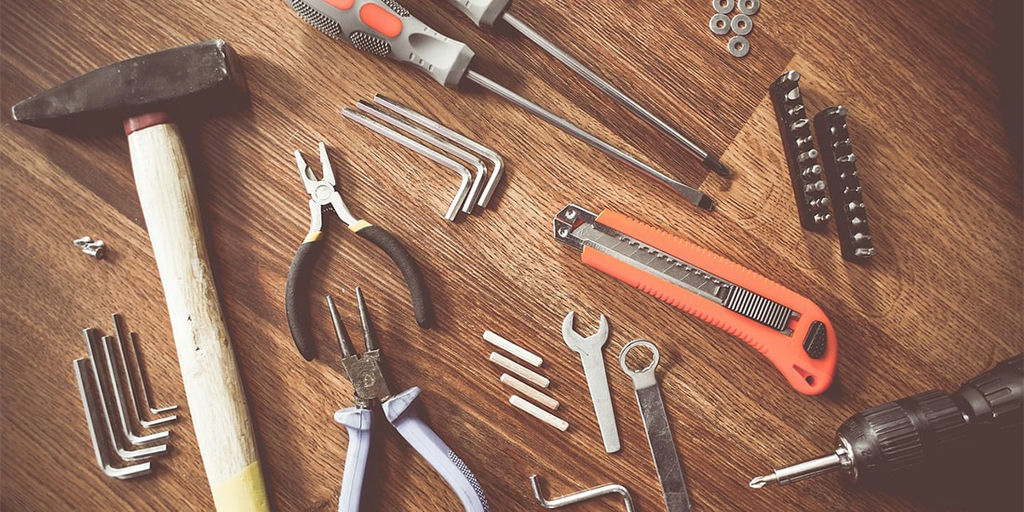Maintain and repair your stuff
- Earth Points
- 45
- Ease
- Medium

Image by picjumbo_com from Pixabay
Description
Maintain and repair your stuff so that you can use things for longer. We are talking about clothes, appliances, bicycles, phones, furniture, and even fixing up your home. Some homes have lasted thousands of years, and some people are lucky enough to have well-made clothes that last a lifetime. All it takes is a little upkeep.
These days, materials come in and out much faster with a throw-away mentality that is a drain on our only home planet. It is time to jump off that fading trend and improve your life at the same time. As the saying goes, they do not make things like they used to.
It is often easier to fix something than you may believe. Either work with a local repair shop or learn how to fix it yourself. In the first case, fixing an item is often much cheaper than buying a replacement. Plus, you support local businesses instead of sending your money to distant lands. In the second case, the internet is loaded with how-to videos, and you benefit from learning something new that stays with you. As a bonus, you better understand how things work, which helps you prevent issues in the first place.
Prevention is almost always better than cure, so look for ways to keep your goods in good condition: clean and oil your bicycle chain and keep your tires pumped up; resharpen kitchen knives to keep them cutting nicely; clean and service your appliances as recommended. Shift your mindset to maintain and repair and reap the benefits!
Tips
There are so many resources to support you along the way. We live in a golden age of information like no other time in human history. The tips below give you some ideas of where to start. Have fun with it, enjoy expanding your knowledge, and save some serious money in the process!
• There are videos online about how to fix pretty much anything. A simple search will give you lots of ideas of how to address the issue and where to start. If it seems like too much to take on, do not worry about it. This is a simple first step to figure out what you are up for.
• The wonderful World Wide Web has replacement parts galore. The trick is to figure out what the part or item you need is called so you can properly search for it. Once you figure out the magic words or model number, the rest will usually fall into place relatively easily.
• When buying anything new, tend towards quality and items that will last a long time. If something has a good warranty, it is often a sign that it is likely to be fixable. In the best case, buy from shops that also do repairs. For example, household appliances stores.
• Is your phone working fine except for issues with low storage space? Check whether it accepts a micro-SD card. These are really cheap to buy and will solve low storage issues. Not all apps can be transferred onto the micro-SD, but photos and other file storage, which are usually the biggest issues, should be easily transferred.
• Or is the battery or another specific part of your phone giving you trouble? These are often replaceable. Either someone at a shop can help you, or if you are up for it, you can do it yourself. Parts tend to be very affordable online and often come with the tools you need.
• Do not have space or the tools to take care of the job? Try looking for a local maker space or a similar spot. These are workshop spaces that have tools and equipment for people to make or fix things. You may need to sign up or pay a small fee.
• Is there someone in your life that is handy? Or perhaps a friend knows of a good local handyman? Be sure to make the most of this to help you keep your stuff and home in good condition.
• Alternatively, repair cafés actually bring the people who know how to repair things to you for free or a small donation fee; these events are often associated with maker spaces, tool libraries, or even regular libraries.
• As soon as you notice a small hole in your clothes or shoes, fix it or get it fixed. The sooner you do it, the easier it is to fix.
• New to mending? There is a lot of great information on how to learn online. To get you started thinking about it, here is an article about mindful mending and different mending techniques. Fixing by hand with a sewing soothes the soul mentality.
• With all of this, the mindset is to keep what you have in good condition and fix something first before rushing out to buy something new (which often is an inferior product). Will that always be possible? Certainly not, so do what you can. Some new stuff helps us live better lives. Do what you can to reduce the pollution from the mining, molding, and shipping of unnecessary new stuff.
